Bridge Cranes
Top Running Bridge Cranes
Top running bridge cranes are designed for facilities with low headroom. The system moves above the runway, allowing more space between the hook and the ground. A rail is installed on top of the runway beams for the wheels to ride on.
Underhung Bridge Cranes
Generally a lot lighter than a top running system, underhung crane runways allows for more versatility. Underhung bridge cranes are typically used for lighter applications; under 20 tons. These systems can be mounted from the ceiling or interlocked together. Because the bridge runs underneath the runway rail, multiple systems can be run side-by-side without interfering with one another.
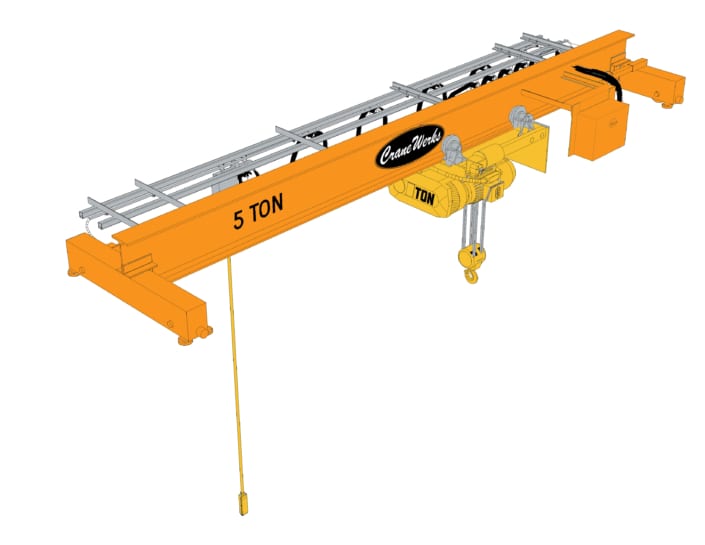
Manual Overhead Bridge Crane
Push/pull or hand chain bridge cranes are the most cost-effective solution of the top running bridge crane options. This bridge crane style is limited to a 5-ton capacity due to the manpower it would take to lift and/or move a load of that weight.
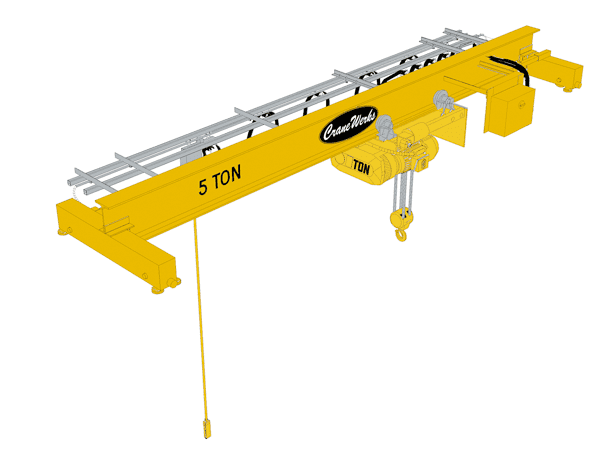
Top Running Single Girder Motorized Bridge Crane
CraneWerks offers a variety of top-running single girder overhead cranes built specifically for your needs. We have the capability to design, build, install and service your equipment and qualified staff to help every step of the way.
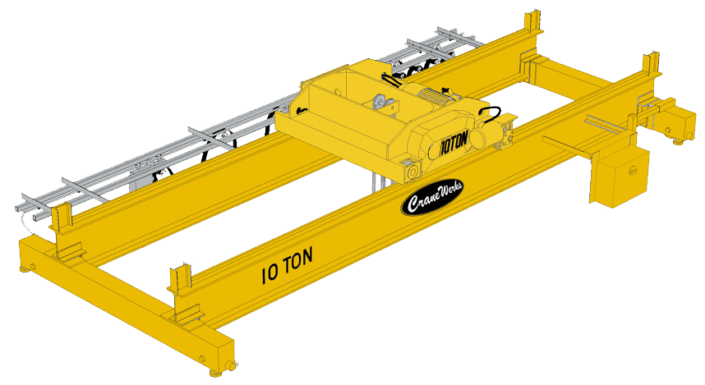
Top Running Double Girder Bridge Crane
A double girder overhead bridge crane can be constructed with either structural steel beams (W flange beams) or welded steel plates, commonly known as box girders. Generally, a large capacity crane these bridge cranes can have one or two hoists on them.
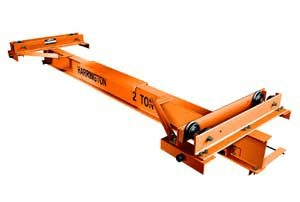
Underhung Single Girder Manual Bridge Crane
Along with top running manual cranes, underhung single girder push cranes are the least expensive bridge cranes available and they have a better trolley end approach compared to a top running manual crane. The durable easy to operate manual bridge crane can be equipped with an electrical festoon wire or an air hose to provide power to your desired lifting apparatus.
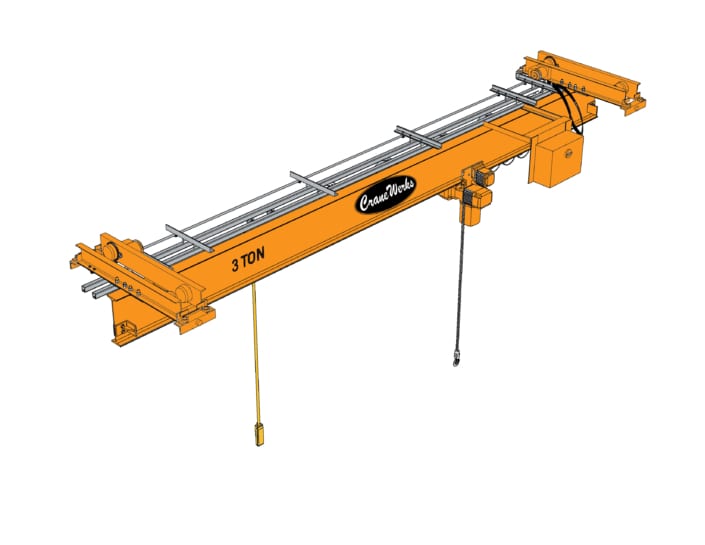
Underhung Single Girder Motorized Bridge Crane
These overhead bridge cranes are ruggedly designed CMAA class C duty units (lighter and heavier-duty cranes are available). CraneWerks bridge cranes are equipped with standard features that are optional on competitors’ cranes. Some options that may be included electronic soft start, side guide rollers on bridge crane end trucks, variable and 2-speed controls, free traveling pendant station, and rubber bridge crane bumpers.